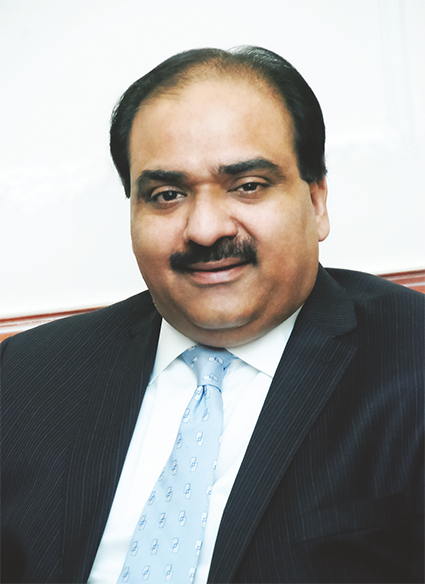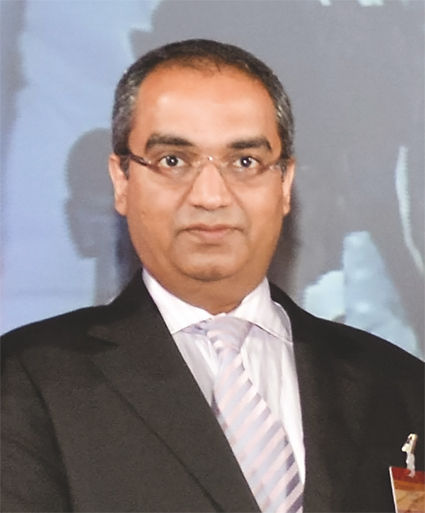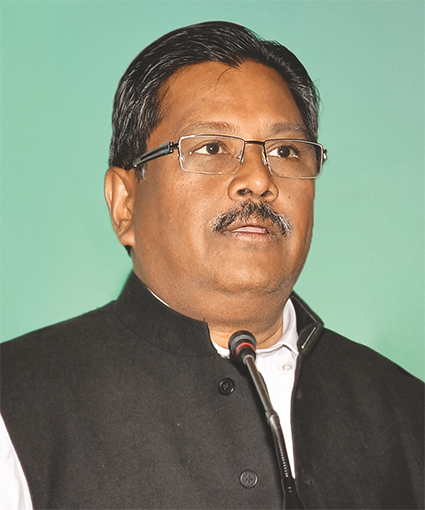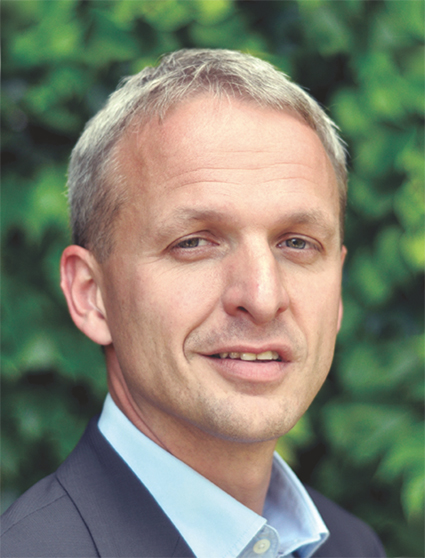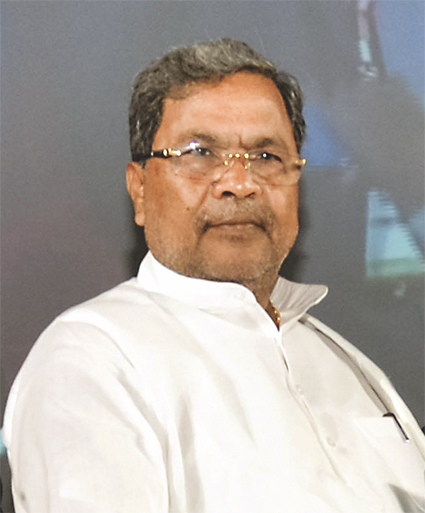
Organised by Indian Electrical and Electronics Manufacturers’ Association (IEEMA), ELECRAMA is a biennial exhibition of power, electrical and industrial electronics and allied products. It is one of the largest international exhibitions for the electrical and industrial electronics industry in the world.
The 11th edition of IEEMA’s premier flagship event and the world’s largest exposition of electrical transmission and distribution equipment, ELECRAMA-2014, was held during 8-12 January 2014 at Bangalore International Exhibition Centre. As in the past so also in the present, ELECRAMA proved to be an exquisite showcase of products and technology, turning out to be the greatest electrical equipment industry spectacle in the world.
ELECRAMA-2014, which was spread over six halls having a gross area in excess of 75,000 sq m, hosted 850 exhibitors from India and over 300 from 25 other countries. This significant confluence of the power transmission and distribution community showcased products and technology through the entire voltage spectrum – from 220 V to 1200 kV, all conforming to global standards and specifications.
ELECRAMA-2014 attracted a record number of visitors from the global electrical industry fraternity, including key decision and policy makers, regulators, officials of power utilities, representatives of funding agencies, technical specialists and consultants, electrical equipment buyers, engineering project contractors and members of the academic community from India and abroad.
It may be mentioned that ELECRAMA-2014 was supported by the Ministry of Power, Ministry of Heavy Industries and Public Enterprises and Ministry of Commerce and Industry, Government of India.
Representatives of 50-plus Indian Central and State power utilities, including over 45 chairmen, managing directors and directors, visited the exhibition and were exposed to the latest products and technology on display. Besides, procurement officials of power utilities from across the world visited the exhibition to get a first-hand view of a wide array of electrical equipment manufactured in India.
——————————————————————————————————————————————————————–
Introducing ELECRAMA-2014
Delivering the welcome address, Mr. Sanjeev Sardana, Chairman, Organising Committee-Elecrama 2014, said, “The first Elecrama was held in 1990 and now we are in the 11th edition. This event has grown over the years to be the world’s largest one-stop T&D electrical exhibition. The wholesome experience of Elecrama makes it the most-attended event for all the global electricity industry fraternity. Elecrama has received an overwhelming response from exhibitors, an active expression of interest from power utilities, technical consultants, engineering project experts from India and abroad… . ELECRAMA-2014 is supported by the Ministry of Power, Ministry of Heavy Industries & Public Enterprises and Ministry of Commerce & Industry, Government of India. For the first time in the history of IEEMA we have state partner Karnataka as our host. This exhibition, which is spread over 6 halls having a gross area of more than 75,000 sq m, has been recognised as the largest T&D exhibition in the world with over 850 exhibitors from India and over 300 exhibitors from abroad. We have pavilions from China, Korea, Turkey and Germany.
“The philosophy underlying Elecrama revolves around evaluation based on continuous innovation, improvisation and participants’ feedback. I’m sure that all of you will find ELECRAMA-2014 a generation ahead in terms of core services, features and amenities. The exhibition and the slew of concurrent events will broaden our perspective on business and offer a strong interface with key decision makers from government utilities, consultants, multi-funding agencies, technical specialties, ECP contractors and academic communities. As the world’s largest confluence of power transmission and distribution community, ELECRAMA-2014 is showcasing products and technology through the entire voltage range –from 220 volts to 200 kV – all conforming to global standards and international specifications. We are indeed thankful to our brand ambassadors Mr. Gregoire Poux-Guillaume, President, Alstom Grid; Mr. Jean Pascal Tricoire, Chairman and CEO, Schneider Electric SA; Mr. Tony M. Gatt, President, Energy Division; and Mr. R. N. Nayak, CMD, Powergrid Corporation of India.
“Over the years, the Indian electrical industry has developed a diversified, mature and strong manufacturing base with a robust supply chain and rugged performance designer products. ELECRAMA-2014 has a unique theme of ‘Go Global’ and the objective is to showcase the strengths and capabilities of Indian manufacturers and the global competitiveness of electrical equipment manufactured in India “right technology at the right price.” It provides a platform for promoting the “made-in-India” brand to a global audience.
“India’s exports of electrical equipment were around $5 billion in 2012-13 with major export products being rotating machines, conductors, transmission towers, insulators, cables, cable accessories, etc. There exists significant potential for India to tap the export markets, as the current Indian exports are less than 1 per cent of the global market share. Even in the developed world, there is a huge demand for emerging replacement and maintenance upgradation of ageing transmission and distribution networks. We are targeting 5 per cent of global trade of electrical equipment in the next one decade so that our exports can reach a target of $25 billion. Keeping this in view, ELECRAMA-2014 will showcase the strength and capability of Indian manufacturers… . I’m sure this event will be a very valuable and enriching experience for international visitors, Indian industry utilities and stakeholders.”
——————————————————————————————————————————————————————–
IEEMA: Building Value for Power Industry
The presidential address was delivered by Mr. Raj Eswaran, President, IEEMA. Speaking about ELECRAMA-2014, Mr. Eswaran said, “As you may well know, this phenomenon has not conjured up overnight. It is a measured and staged evolution that has happened over the years. It has happened because of IEEMA’s single-focused endeavour to build value for electrical industry as a whole. IEEMA is a ’65-year-young’ organisation – young because today it stays reinvented, as the dynamics of the environment change. It believes in keeping its ears to the ground, sensing distant signals of change. This helps us prepare deftly for the quantum changes that may catch many a monolith on the wrong foot. We believe in being relevant to our members in ways that enhance, enrich and strengthen them to face the challenges and competition. A testimony to the fact is here today, where the entire power transmission and distribution fraternity has congregated in numbers unparalleled on any other forum.
“IEEMA is not just an industry association that most of us like to imagine, but essentially a first-rate technical association at its core. The sheer number of technical exchanges, seminars and other initiatives conceived and conducted by IEEMA matches the pure-bred technical societies worldwide. We are now expanding this aspect by building strong linkages with global technical bodies to open up possibilities in collaboration and co-creation of value-generating initiatives and training programmes. We would shortly be venturing into our countrywide utility IEEMA partnership programme to deliver lectures by globally acclaimed experts on specialised topics at the doorsteps of the utilities. Many utilities have shown a keen interest and have welcomed the concept. In fact, we are refocusing IEEMA’s perspective to nurture the spirit of entrepreneurship coupled with enrichment of the engineer in all of us. This is what sets us apart from other trade bodies and associations. We understand that our customers are our raison d’être. In the case of our high- and medium-voltage segments, power utilities are the main customers and installation partners. We call them installation partners because we are both accountable to the final end customer, that is, the consumer. We are developing close working relations where we would be able to co-create solutions based on real-life feedback and scenarios encountered by utilities eventually leading to a robust, reliable and an economic network that keeps the consumer sleeping soundly through the night. IEEMA derives its strength and pride from the real heroes of electrical equipment industry – the small and medium enterprises. We recognise and respect their immense contribution towards taking us to a world-class level despite the numerous challenges we face. We resolve to support and strengthen them with technical skill enhancement and policy-based intervention wherever possible through our dialogues with the government and other stakeholders… . As an industry we know the importance of people – the biggest resource. It is our responsibility to build a capable workforce, hone innovation, recognise talent that can dream and build a better tomorrow.
“Elecrama today has grown to become the single largest showcase of all transmission and distribution equipment under the sun. At IEEMA, we recognise the need for and relevance of a technology property focusing on low voltage intelligent electricity distributed generation and smart energy consumption space. This is likely to present a continuous future topic for discussion that will do the rounds across every significant player… . We are proud to introduce you to Intellect – a unique concept that will redefine the way one would look at exhibitions. It is an exciting new format, the contours of which will be shared in the coming months. The maiden edition would be held in Mumbai next January. It would be the next pitch stop where we will together redefine the landscape of smart energy and smart consumer.”
——————————————————————————————————————————————————————–
India on the Threshold of a Power Revolution
Mr. Devendra Chaudhry, Additional Secretary, Ministry of Power, Government of India, gave an informative and encouraging special address. He said, “We in the Ministry of Power have supported IEEMA along with ministries like Industry and Commerce – and rightly so. This exhibition will speak volumes of the great progress that India has made so far. The Indian power industry has come a long way and is progressing every day. In the 11th Plan, we added 55,000 MW, which is 250 per cent of the earlier five-year period. In the 12th Plan, we will add 100,000 MW, that is, the double of what we have done in the 11th Plan; and in the 13th Plan, we will add another 100,000 MW! So, who says India is going down? Who says that the power sector is going down? On the contrary, India is rapidly progressing.
“However, the power sector currently faces three threats. It has three weaknesses. The first threat is the perceived slow growth or the slowing growth of the power sector. The second threat is the uneven playing field for the domestic industry – for the domestic electrical industry – vis-à-vis foreign competitors. The third threat is the stagnating or may be negative growth of the electrical industry in the country.
“Let’s take a look at the weaknesses. They include high cost of the product itself – high cost of raw materials– low technology development and the so-called inconsistent procurement policies or the policies of the government – central or state.
“Let’s consider the slow or slowing growth of power industry. I have already spoken about the progress the Indian power industry has been witnessing. Look at the transmission sector. We are going to add 100-plus of circuit kilometres and 2.8 lakhs, that is, 280,000 MVA, of transmission capacity in the next three or four years. Which other country has planned to achieve such a target? May be China… . I think we are in great times today. I don’t see any reason why we should we be dismayed. Okay, we are having problems in the area of coal and gas. The Government of India is working hard in this area, and let me tell you that for the 12th Plan, 95 per cent of the coal has been tied up. As far as the 13th Plan is concerned, about 60,000MW of coal-based capacity is going to come up; we have started making efforts to achieve it. There will be help from imports, but we will be able to arrange for the fuel. Now, let’s take up the issue of gas. Well, gas is just not there. We are short by 7 to 8 per cent of our gas requirement, and that is something with which we will have to live. But let me make a point about the state of the renewable sector. The Government of India has planned an $8 billion programme for evacuation of power and supporting intra-state transmission network in the country. It has planned to add 50,000 MW by 2017 in the renewable sector. According to a paper from the PMO, the government is aiming at 100 MW of solar energy. Some of us would say it’s a dream, but let me tell you that you cannot go forward if you don’t have a dream… . Therein lies the secret of our growth; therein lies the drivers of our growth. I cannot believe that India is slowing down or has slowed down in terms of generation and transmission. The beginning of 2014 saw India quietly moving into the world’s largest power grid – when the rest of the country was tied to the Raichur-Sholapur transmission line.
“The other challenge is the poor per capita consumption of power in the country. It is just 883 units per person. The world average is 3,000-plus. How can we raise consumption of power from 883 units per person to 3,000 units? We will have to look at two sectors if we want to increase our power consumption – the untapped rural sector and the industrial sector. The percentage of rural consumption of power in the country has not varied much in the last three decades; it is around 15 per cent. Interestingly, the consumption of power in the industrial sector has also not varied significantly in the last three decades; it is around 55 per cent. Even today the farmers’ fields in some of the states are not connected with electric power. We must look at how we can increase rural power consumption. This task can be done if every land holding in the country gets energised pump sets.
“The other area of concern is global competiveness. Admittedly, our imports in this sector have increased by 54 per cent over the last few years. But India has limitations in terms of trade policy. We cannot go beyond a point. It means that we have to look at life beyond duty concessions – and the way out is technology. We are on our way to financing R&D programmes and test equipment entailing a total cost of Rs 12,000 crore. We need to set up more test houses not only in the government sector but also in the private sector.”
——————————————————————————————————————————————————————–
Future of Global T&D Business Technology and Markets
Expressing his views on the future of global T&D business technology and markets, Mr. Gregoire Poux-Guillaume said, “I’ll talk about developments in T&D and how India can play a role in it. India is already playing a significant role, but it has to go global; and there’s a great opportunity to do it. The energy market is changing like never before, and the grid is under pressure like never before. There are many trends that are impacting our industry. The first one is that there is more intermittent energy and that’s changing the flows; and that’s changing the balance… . There’s a lot of intermittency in the network and that creates a lot of challenges. The second trend is that we need more intelligence in the grid; for example, digital sub stations, less human interaction, more resiliency to natural events or catastrophes. We’ve seen them in the recent past. The world is changing and the grid is impacted; and once the grid is impacted, it has to be covered. When you have a blackout in India, it takes six hours to be back and running. It’s a hell lot better than a blackout in the US where it takes a few days. So the grid has to be resilient, and for that the grid has to be intelligent; and visual substation is one element. The third point is that smart cities are new animals in the industry. They transact with the grid and bring opportunities and complexity. The fourth point is the two-way flow of energy. It’s a more complicated market to manage. You have what we call prosumers – people who are both consuming and selling to the grid. You have micro grids; you have capacity markets. We need more software intelligence and more financial tools in order to be able to make the right judgement calls, the right trade-offs.
“Another significant change is the development that has taken place in the area of HVDC. India is a leader in HVDC. Yet another trend is that we need to have tools for distribution that match the sophistication of the tools we have in transmission today. The global optimisation has to take into account local consumption and local generation. This means that for the grid the decision-making time for these trade-offs has become faster than human capabilities; and that means we need intelligence… and that’s how the grid is evolving.
“So, is India a player in all of this? The good news is that India is a significant player in all of this. In HVDC India is a leader in 88kV. India is also a leader in inter-regional power transfers. We have in many countries an imbalance between generation and load centres; and India is doubling its capacity to balance inter-regionally. India is also a leader in wide area monitoring systems. You have a very comprehensive and very aggressive plan to roll out phase angle measurements so that you can have real-time measurements of the networks – so that you work not from models but from measuring what’s happening in real time. Also, we have a pilot digital substation in India and I’m sure we’ll have more in the future, with fewer cables, more safety, less human interaction and small equipment. India is also a leader in static VAR compensation. You have a significant plan to roll out static VAR compensation to improve the stability of the network to be able to push more electricity into the existing assets. India is a leader worldwide on the transmission side. India is really ahead of others on transmission. For example, you have the largest synchronised AC grid in the world. India is in the process of moving forward with a national transmission asset management centre where you’ll be monitoring centrally 192 substations around India.
“But India is currently lacking on the sub transmission side, distribution side, and there are areas in which the country can improve. The bottlenecks are going to happen at that level and this has to be treated expediently. It’s not currently happening because the distribution or sub transmission levels are under-invested. It’s been a loss-making area in India, and that has led to some under investment. It’s a major cause for network congestion. India needs to expand the transmission success it has had into the distribution domain to make a seamless and reliable one grid.
“To achieve this target, India must use its talent. India has some of the greatest technical minds in the world. If we look at our business, some of our best technical talent is in India. Even if we look internationally, some of our best talent internationally is Indian. So, India has to use this technical talent, the ability to innovate, to move from being an early adopter to being a technology disruptor – a country that leapfrogs the competition and the existing technology to come up with innovation – things that take the world one step ahead.
“India also has to focus on innovation on the manufacturing side. India has a manufacturing sector that has a challenge to it. We have to bring the manufacturing sector on a par with the software sector, as this step will open the doors to international markets. We need to build the brand image of India. The country has to be recognised as a source of innovation and quality.
“The T&D we see at this exhibition is clearly the future of India; and if we work together, India can be the future of T&D worldwide.”
——————————————————————————————————————————————————————–
ELECRAMA-2014 was formally inaugurated by Mr. Siddaramaiah, Chief Minister of Karnataka, and chief guest at Elecrama-2014. Speaking on the occasion, the Chief Minister said, “The aspirations of India and its people can be met only if the economy grows at a fast and sustained pace. The energy and power supply system is a key ingredient of economic growth and quality of life. Assured availability of quality power at reasonable cost will not only act as a catalyst in the socio-economic development of the nation, but also enhance the global competitiveness of the domestic industry leading to greater employment generation and higher levels of per capita income. An efficient power supply system can only be ensured by the rapid development of electrical equipment industry encompassing the complete value chain in power generation transmission and distribution equipment. If the Indian economy grows at a rate of 8 per cent per annum for the next 20 years, it is estimated that India will have to increase its electricity generation capacity by about four times by 2032. The plan to increase electricity generation capacity will need to be accompanied by commensurate transmission and distribution network upgradation and capacity enhancement. India’s electrical equipment industry is therefore expected to play a vital role in improving the country’s power infrastructure. The Indian electrical equipment industry must increase its preparedness and enhance its competitiveness to meet the current and future demands of our power sector. Additionally, the industry should become globally competitive at increasing the exports of electrical equipment.
“It needs to be especially highlighted that given the growth potential of the industry, the potential to generate additional employment both direct and indirect is significant. Our electrical equipment industry has matured over the years and now has a diversified and strong manufacturing base. Several major foreign players also have a domestic presence either directly or through technical collaborations with domestic manufacturers. But we need to step up Indian manufacturers’ need to absorb new technologies rapidly and to continuously undertake R&D vis-à-vis innovation. Indian manufacturers also need to meet the evolving global standards for efficiency and sustainability. They need to engage significant value creation in their areas of operation. Manufacturers must cut costs, streamline operations and adopt the best global practices. Indian companies need to deploy new manufacturing and effective supply chain management and other dynamic production techniques to maintain cost-efficiency even with supplied products conforming to high standards of quality. Indian companies need to take recourse to measures such as leveraging to power innovation and adopting cutting-edge technology for faster product development to stay ahead.
“It has been well established that successful enterprises globally are knowledge-based and trained. Their survival now depends increasingly on continuous product and system innovation. As you are aware, Karnataka is a pioneer in the power sector. The state government has initiated several power projects to the tune of 18,000 MW across Karnataka, both in conventional and non-conventional sectors; and they are in different stages of implementation. Karnataka in all probability will be a power-surplus state by 2017. In addition, several reform measures have been initiated in the distribution sector, bringing down the aggregate technical and commercial losses. Also, a number of steps have been taken to improve service delivery to the customer by reducing inefficiency in the system. These measures provide enormous opportunity to electrical equipment manufacturers to supply high-quality equipment at reasonable cost.”




